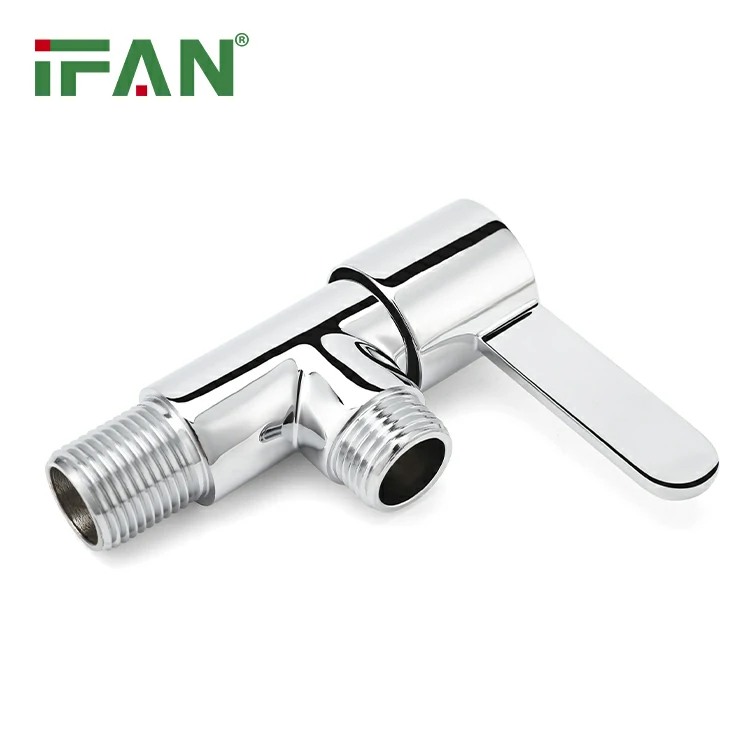Improper installation of brass angle valves can lead to leaks, system failures, and even long-term damage to the plumbing system. Here are the key ways improper installation can cause problems:
1. Incorrect Thread Sealing
- Problem: If the threads of the valve are not properly sealed with thread tape or sealant, water can leak through the gaps.
- Solution: Use PTFE tape or pipe thread sealant on male threads to ensure a watertight connection.
2. Over-Tightening or Under-Tightening
- Problem: Over-tightening can crack the valve body or damage the threads, while under-tightening can result in loose connections and leaks.
- Solution: Tighten the valve hand-tight plus a quarter to half turn with a wrench, ensuring a secure fit without excessive force.
3. Misalignment with Pipes
- Problem: If the valve is not aligned properly with the pipes, it can cause stress on the connections, leading to leaks or cracks over time.
- Solution: Ensure the valve is properly aligned with the pipe before tightening. Use flexible connectors if necessary.
4. Using Incompatible Piping Materials
- Problem: Brass angle valves may not seal properly if connected to incompatible materials (e.g., mismatched thread types or materials prone to galvanic corrosion).
- Solution: Verify compatibility between the valve and piping material. Use appropriate adapters if needed.
5. Improper Use of Compression Fittings
- Problem: If compression fittings are not installed correctly (e.g., missing ferrules or incorrect tightening), leaks can occur.
- Solution: Follow the manufacturer’s instructions for compression fittings, ensuring the ferrule is properly seated and tightened.
6. Failure to Support the Valve
- Problem: Brass angle valves can become stressed if the connected pipes are not properly supported, leading to cracks or leaks.
- Solution: Use pipe hangers or clamps to support the pipes and reduce stress on the valve.
7. Ignoring Flow Direction
- Problem: Installing the valve in the wrong direction (if it’s directional) can restrict water flow or cause valve failure.
- Solution: Check for flow direction markings on the valve and install it accordingly.
8. Debris in the System
- Problem: Dirt, debris, or pipe shavings can get trapped in the valve during installation, causing blockages or damage to internal components.
- Solution: Flush the pipes before installation and ensure the system is clean.
9. Improper Handling of O-Rings or Seals
- Problem: Damaged or missing O-rings or seals can lead to leaks around the valve handle or connections.
- Solution: Inspect and replace O-rings or seals if necessary, and avoid over-tightening.
10. Ignoring Manufacturer Instructions
- Problem: Failing to follow the manufacturer’s installation guidelines can result in improper installation and void the warranty.
- Solution: Always refer to the installation manual provided by the manufacturer.
Consequences of Improper Installation:
- Water Damage: Leaks can cause significant damage to walls, floors, and ceilings.
- Reduced Efficiency: Improperly installed valves can restrict water flow or fail to shut off completely.
- Increased Maintenance Costs: Frequent leaks or failures may require costly repairs or replacements.
- Safety Hazards: Water leaks can lead to mold growth, electrical hazards, or structural damage.
Summary:
Proper installation of brass angle valves is critical to prevent leaks and system failures. Key steps include using the correct sealing methods, ensuring proper alignment, supporting the valve, and following manufacturer guidelines. Taking these precautions will ensure reliable performance and longevity of the plumbing system.
View more:https://www.ifanfittings.com/


